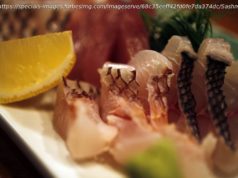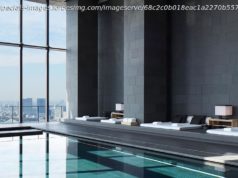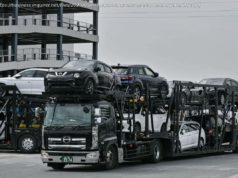The bestselling novelist talks Aston Villa, Led Zeppelin and the end of human life on earth.
What’s your earliest memory?
Flying from Birmingham to Belfast to visit my grandparents, the day before my third birthday, in a war-surplus DC3. Because it was an unpressurised cabin, before landing a steward in a white jacket brought around a silver tray of boiled sweets. I was paralysed with joy. I remember thinking, “All this and free sweets, too?”
Who was your childhood hero? And who is your adult hero?
As a kid, I liked the Australian RAF bomber pilot Micky Martin, the Dambusters second-in-command – a very brave hooligan. I guess he could be my adult hero, too. Or Richard Dawkins, maybe – he’s waging a bitter battle of a different sort.
What political figure, past or present, do you look up to?
Very few, but Franklin Delano Roosevelt would be one. Despite many lacks and failures, his was an immense and transcendent influence on world history.
Who would paint your portrait?
Preferably not a realist. How about Piet Mondrian?
What would be your Mastermind special subject?
I’ m a trivia geek of enormous proportions, so I could do lots of things – Aston Villa, Les Paul guitars, the books of John D MacDonald, Led Zeppelin, the Toyota Land Cruiser 1957-2017, the New York Yankees, the construction of the Chrysler Building. I have never lost a game of Trivial Pursuit.
Which time and place, other than your own, would you like to live in?
I really wouldn’ t want to go back to any of it. So I’ ll opt for Denver, Colorado (which should still be above sea level) , a hundred years from now.
What TV show could you not live without?
I have been in the storytelling business for 40 years, and nothing on TV surprises me any more except live sport, the only truly unpredictable shows left.
What was the last book that changed your thinking?
Dark Money by Jane Mayer, about the influence of billionaires in US politics – for her coverage of certain donors’ business practices, which reveal pathological greed. Guys who already have eighty thousand million dollars will hurt and maim and kill to get more.
What’s your theme tune?
I’ m fairly shy, so before appearances, in my head I play “Golden Boy” by Natalie Merchant or “The Lemon Song” by Led Zeppelin – why we were born with ears.
What’s the best piece of advice you’ ve ever received?
My Irish granddad used to say: “Spend your money before it runs out.” I’ m sure he was joking, but it’s advice I have followed.
What’s currently bugging you?
Are you kidding? It was a horrible year, 2016, and we’ ll be living with the fallout for a very long time.
When were you happiest?
Manjack Cay in the Bahamas, February 1993. We were broke, but my wife assembled offers and we had a holiday. The hotel had boats you could borrow to visit uninhabited islands. I remember standing on one and thinking how absurd it would have been to predict ever being there.
Are we all doomed?
Of course we are. Evolutionary history shows we’ re a vicious bunch, clever but not clever enough. We’ ll be done soon, and the planet will recover. Call it fifty thousand years, from the invention of language to extinction. A tiny blip.
“No Middle Name: Jack Reacher – the Complete Collected Short Stories” by Lee Child is published by Bantam Press
Some time in the mid-1920s, Jimmy Doolittle, a stocky Californian aviator, fell out of a window and broke both his ankles. He was in Santiago to perform a demonstration flight for US aircraft manufacturers, and at stake was a large commission from the Chilean government. So, despite the fresh casts on his feet, Doolittle took to the skies and dazzled spectators with rolls and upside-down manoeuvres, sealing the deal.
Doolittle, however, is better known today as the man who commanded the Tokyo raid of 18 April 1942 – the first air strike on the Japanese home islands following the attack on Pearl Harbor four months earlier. With that raid began a series of bombing campaigns that killed at least 300,000 civilians and destroyed the homes of four million Japanese. Tokyo was razed by napalm-fuelled firestorms; Hiroshima and Nagasaki were flattened by atomic bombs. The destruction in some areas was comprehensive. On 18 August 1945, a Jesuit clergyman called Father Wilhelm Kleinsorge walked through the ruins of Hiroshima and saw, as John Hersey wrote in the New Yorker a year after the detonation, a “reddish-brown scar”, four square miles in size, surrounded by “range on range of collapsed city blocks”.
Visit Hiroshima now and you will find a few reminders of that annihilation – the museum, the peace memorial dome, but little else besides. (I lived there as a child and learned of what had happened only long after moving to the UK.) The same is true of Tokyo, where the city centre gleams with almost desperately futuristic displays of the latest technology. Yet the newness of the buildings in Japan’s once ruined cities is a testament to that often forgotten history. Before resurrection must come death.
At the Barbican exhibition “The Japanese House”, the work of more than 40 architects demonstrates the many contradictory forms that the resurrection took. The buildings here – in models, photographs, installations – are metonymies of wider changes in society, from the push towards internationalism that followed the US occupation to attempts to define a modern sense of “Japaneseness”. In a country where most houses are erected and torn down after just 25 years, architecture is well placed to tell the national story of the past seven decades – a period in which the “go-go” economic boom gave way to a managed stagnation, and the old structures of family and work began to crumble.
One area long contested by the country’s architects is privacy, which, in effect, is an imported concept: there is no Japanese word that fully corresponds to the term’s English meaning. Where an Englishman’s home was often built to last centuries, Japanese houses were historically more ephemeral and permeable, constructed out of wood and divided by paper screens. After the Second World War, however, the demand for new housing led to the mass construction of prefabricated concrete homes, and the accelerating economic growth of the era drew more people to the cities than they were originally designed for.
Innovators such as Takamasa Yoshizaka attempted to strike a balance between “individual freedom and collective benefit” and also worked to reinterpret concrete as a creative material. Yet that balance was too often thrown by the demands of urban life, and some sought hermetic refuge. Kazunari Sakamoto’s 1970 house in Minase was installed with a deliberately inconspicuous entrance and high windows above head height, as if in rejection of the bustle all around it.






